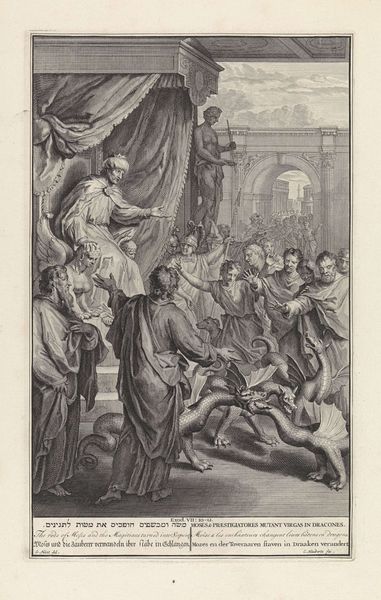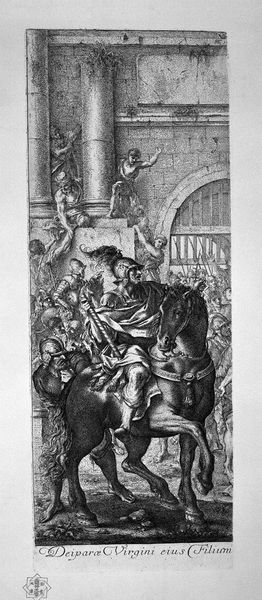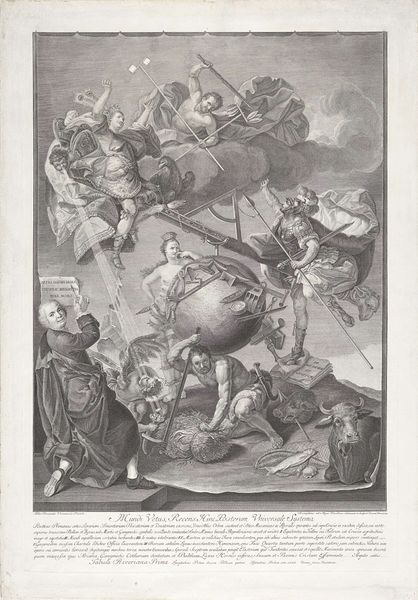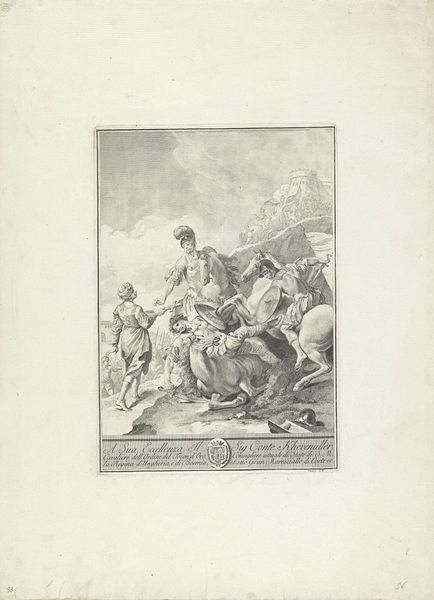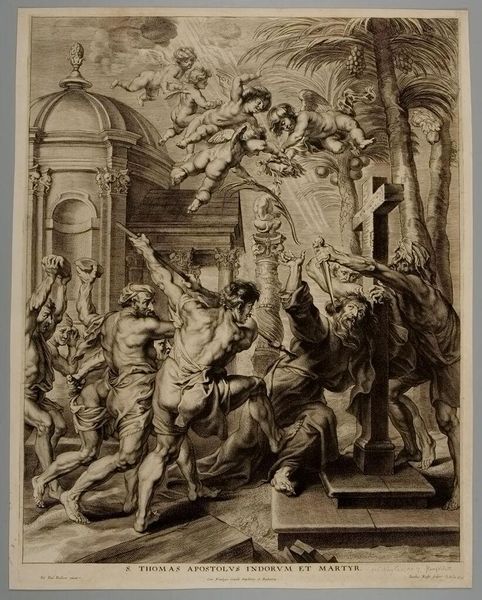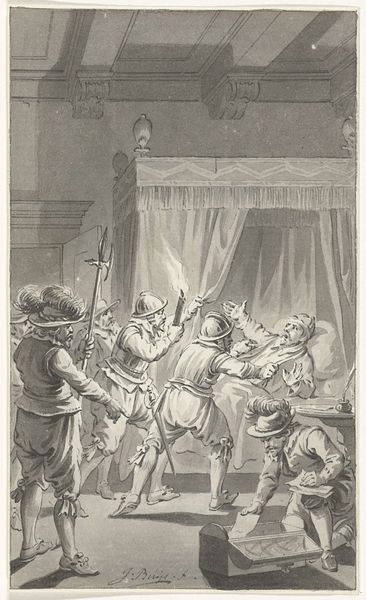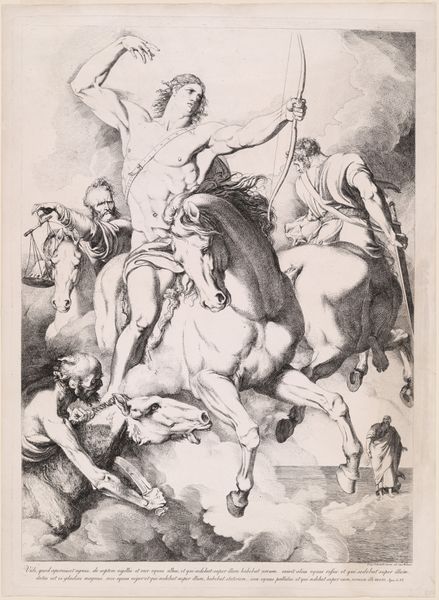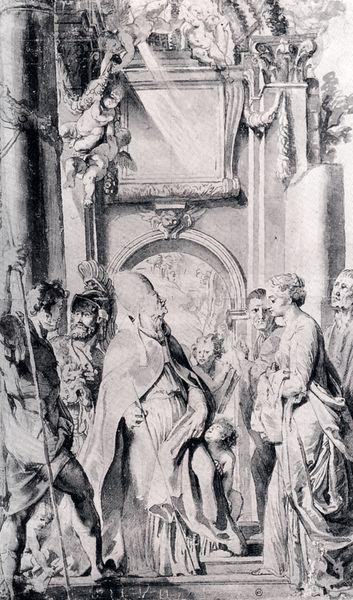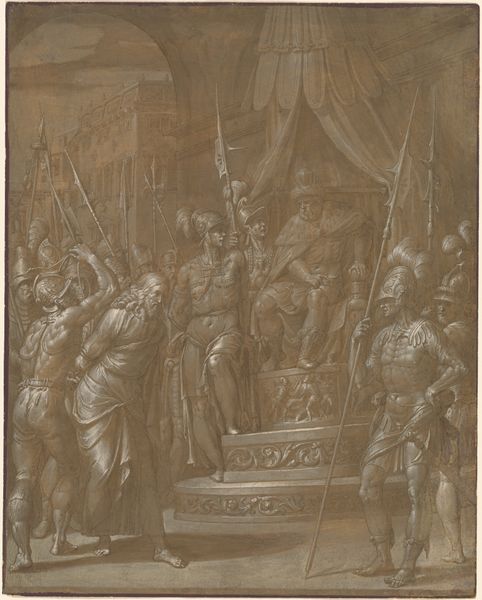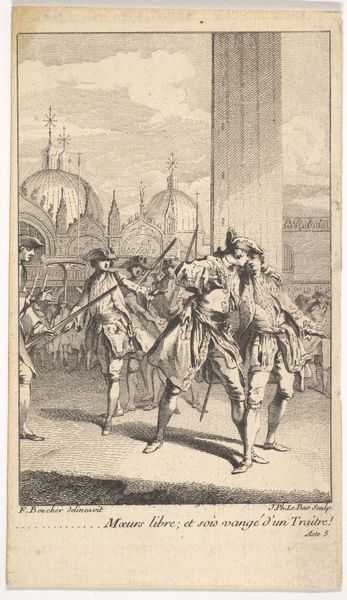
Dimensions: 714 x 485 cm
Copyright: Public domain
Editor: Here we have Eugène Delacroix’s *The Expulsion of Heliodorus*, completed in 1861 using oil paint. The dynamism is overwhelming – figures in motion, the swirling drapery, it’s quite chaotic. What is your reading of this piece? Curator: The drama definitely captures your attention, doesn’t it? But look closer. Think about the narrative of religious spaces and who holds power. Delacroix wasn't just painting a story from the Second Book of Maccabees, he was intervening in a much larger dialogue. Editor: How so? Curator: Consider the church it adorns – Saint-Sulpice. It's not just a place of worship, it's a stage for projecting particular ideals of power. *The Expulsion of Heliodorus* visualizes the triumph of the sacred over the profane, reinforcing established religious authority at a moment when that authority was under great social, political, and philosophical scrutiny. Delacroix seems to actively participate in maintaining the status quo. Editor: So you see the painting less as a celebration of faith and more as…a reinforcement of power structures? Curator: Precisely. Look at how Heliodorus is violently overthrown, made utterly powerless, and reflect on the message that sends regarding challenges to religious institutions. Editor: I see, almost like a warning. I hadn't considered the painting in such a social and historical light. Curator: Exactly. Art is rarely created in a vacuum. Considering the context – the social, political, and religious currents – is crucial to unpacking its deeper meanings. Editor: This makes me look at other paintings in Saint-Sulpice differently. Thanks, this was insightful! Curator: It’s a necessary first step. Keep challenging your own perspective; that is where true understanding begins.
Comments
No comments
Be the first to comment and join the conversation on the ultimate creative platform.

